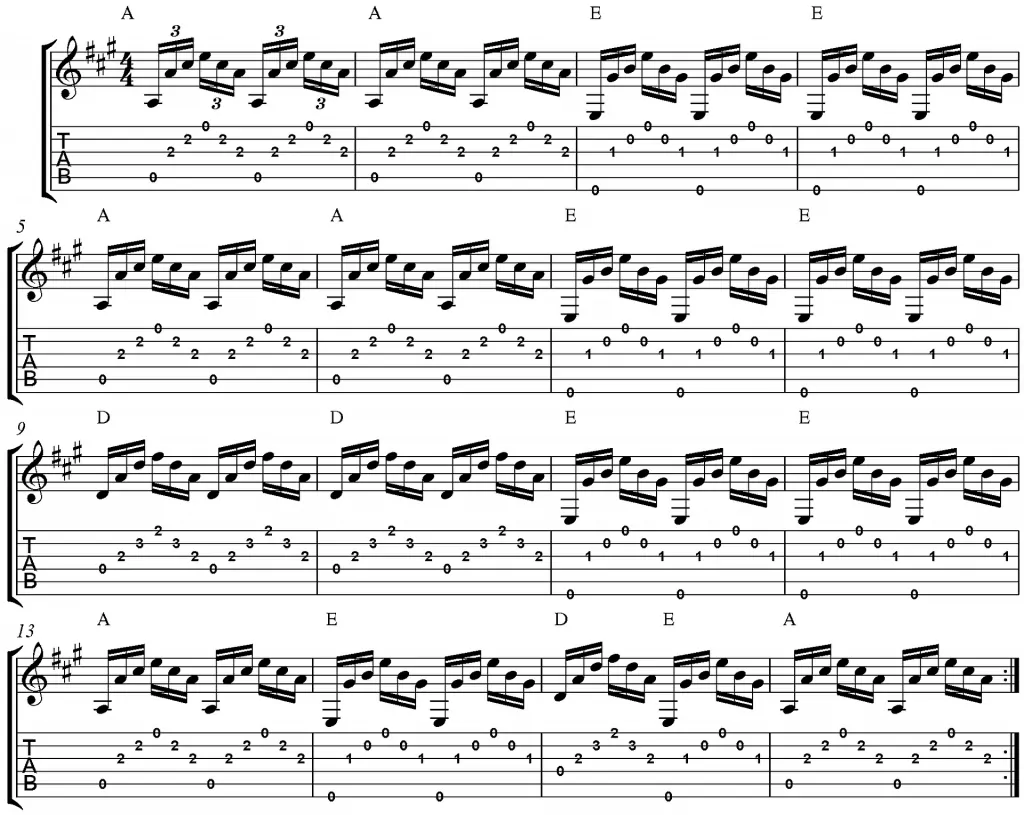Jazz involves a lot of improvisation, which can be intimidating as a new guitar student. How do you improvise if you don’t know how chord progressions work? Can you play songs that have absolutely no structure when you’re new? Guitar sets and performances don’t always follow a strict progression. Instead, jazz musicians tend to use performance as a creative outlet. They pick a beat, a certain chord progression, and tinker around within those progressions.
When I started listening to Jazz standards (as a kid), I remember feeling overwhelmed by the seemingly unstructured progressions. It seemed as if Jazz musicians explored a range of possibilities that no other genre could. And I didn’t like the inconsistencies. As I continued to learn about Jazz, I realized that there actually is a structure to Jazz standards, albeit different from other styles of music. And the more you explore the genre, the more it’ll translate into a creative, yet logical progression.
If you’re interested in developing your relationship with Jazz standards, a really good approach is to learn the most famous jazz chord progressions. This information can be added to your toolbox to use when you’re inspired or looking to delve into the world of improvisation. Learning common jazz progressions helps you to outline a song without stifling the melody. Once you master these progressions, you’ll be able to choose a particular progression that will allow you to solo with a whole band without having little more than a jazz chord progression in mind.
The Most Common Jazz Chord Progression
The most common Jazz chord progression involves a II-V-I (2-5-1) component. This means that, regardless of the chord you choose, you’ll move from II-V-I degrees on the fretboard. Most jazz songs include some variation of this progression, making it an essential part of learning jazz standards. It’s a staple in Jazz standards. And, actually, this particular pattern can be found in most genres of music. Meaning, once you get used to the way it sounds, you’ll be able to pick it out of R&B music, pop, rock, and more genres.
While most songs will involve a number of different patterns and rhythms, starting with the basics should help you set some standards for improvisation.
The following example demonstrates the II-V-I pattern in the key of C:
/ DM7 / G7 / Cmaj7 /
DM7 = 1120xx
G7 = 100023
Cmaj7 = 000230
But you can apply this progression to any key. You could begin to explore a minor chord progression on a minor key if you’re looking to make your progression less peppy. If you’d like to explore a different key with the same structure, you could try the following chords:
/ Em9 / A13 / Dmaj9 / Dmaj9 /
Em9 = x7577x
A13 = 5x567x
Dmaj9 = x5465x
Songs that include the II-V-I progression are as follows:
- Tune Up by Myles Davis
- Autumn Leaves by Nat King Cole
- Summertime by Ella Fitzgerald
Mastering the I-IV-II-V Progression
Another common chord progression in jazz involves a I-IV-II-V pattern. George Gershwin’s “I Got Rhythm” coined this progression. He had such an impact on Jazz music that the popularity of his songs generated more music that implements this pattern. And since the birth of “I Got Rhythm”, the I-IV-II-V patterns have evolved to be a core jazz pattern.
/ C / Am7 / Dm7 / G7 /
C = 01023x
Am7 = 01020x
Dm7 = 1120xx
G7 = 100023
The III-VI-II-V follows a similar progression. The difference with this pattern resides in the first chord. But familiarizing yourself with patterns like the I-IV-II-V will help you to slide into less conventional jazz progressions and jazz blues without difficulty.
Mastering the I-VI-II-V Chord Progression
Another common, and beautiful jazz chord progression involves the I-VI-II-V pattern, ending with the V chord. Study bass has a great table that shows you this chord progression in every key. For example, if you’d like to find this pattern in the key of C, the chords will operate as follows:
/ Cmaj7 / Am7 / Dm7 / G7 /
Cmaj7 = 000230
Am7 = 01020x
Dm7 = 1120xx
G7 = 100023
Songs that incorporate the I-VI-II-V pattern:
- Long Ago by Oscar Peterson
- All I Have to Do Is Dream by the Everly Brothers
- Can You Feel the Love Tonight by Elton John and Tim Rice
Additional Chord Progression:
II-V-III-VI
In the following video, you can begin to explore the II-V-II-VI pattern. Steve Herberman even includes a PDF on his channel in order to help you explore this pattern to its greatest potential. In this progression, you can substitute i for iii, if desired.
Quick Tip:
I’ve never been someone who wants to delve into the science behind music (even though I’m well-aware that music theory makes you a much stronger musician). If you’re like me, and you’d rather be playing the chords than worrying about how music theory works, don’t fret. Here’s a terrific resource that gives you tons of different chord progressions in every genre. If you know that you’d like to play Jazz guitar but you’re not so sure that you care about the degrees at which the chords are changing, have a look at these progressions/jazz standards and let the creativity flow.
Using Arpeggios to Improvise
While music theory can take some of the magic out of a performance, it adds a lot to your musical toolbox. Studying scales, arpeggios and other music theory will optimize your skills. And arpeggios are particularly useful when you’re looking to improvise.
Arpeggios are broken chords. Played in succession rather than in a single chord, these scales can be used to improvise on top of other chords. This is a really common approach in jazz guitar and jazz standards.
According to Webster’s Dictionary, arpeggios are:
/ Arpeggio / ar.peg.gio
- production of the tones of a chord in succession and not simultaneously
- a chord played in arpeggio
Using arpeggios in jazz guitar — or broken chords, allows you to be curious within a structured environment. This type of exploration is a huge part of jazz guitar and jazz standards. But equipping yourself with these strategies transfers over to all genres, making you a more versatile artist.









